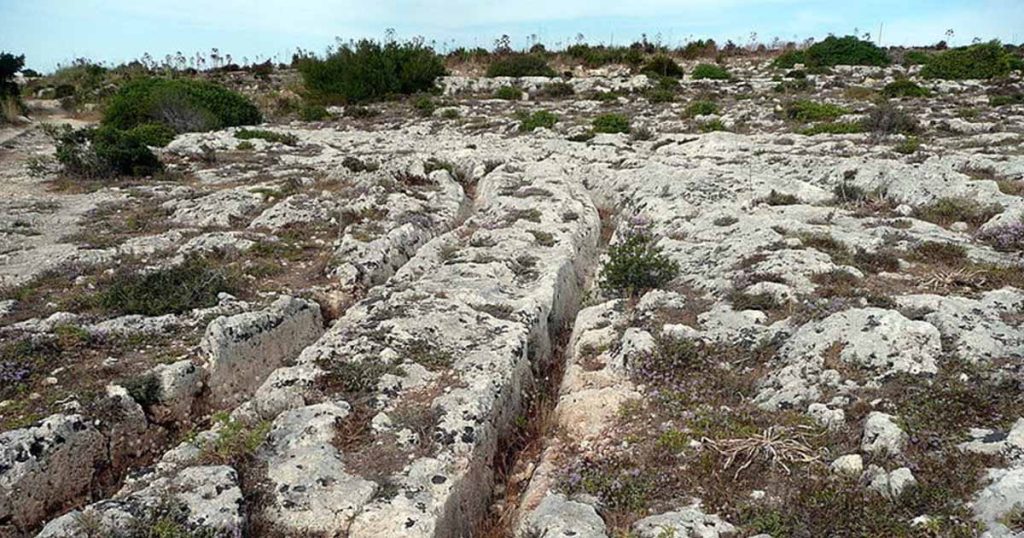The islands of Malta and Gozo, nestled in the Mediterranean Sea, bear a remarkable enigma etched into their limestone terrain: the perplexing cart ruts of Misrah Ghar il-Kbir. These ancient tracks, resembling parallel scars, have captivated researchers for generations, leaving behind a trail of questions shrouded in mystery.
Mysterious Origins: Delving into the Enigma

At Misrah Ghar il-Kbir and beyond, the landscape is marked by intricate grooves carved into the bedrock, reminiscent of a primitive railway system. Unlike the symbolic Nazca lines or monumental stone circles found elsewhere, the cart ruts of Malta suggest a practical purpose—perhaps a network of transportation routes or industrial pathways.
Dubbed “cart ruts” due to their resemblance to vehicle tracks, these man-made channels vary in depth and width, with some reaching astonishing depths of up to 60 centimeters. Yet, the sheer scale of these grooves raises doubts about conventional theories regarding their creation. Could ancient carts or sleds truly navigate such challenging terrain?
Clapham Junction: Deciphering the Traffic Patterns

The ruts of Misrah Ghar il-Kbir present an additional puzzle: their baffling trajectories. Some tracks defy logic, leading directly off cliffs or plunging into the sea, leaving researchers perplexed. The density of these ruts has earned Misrah Ghar il-Kbir the nickname “Clapham Junction,” evoking the chaotic network of railway tracks in bustling London.
While similar formations exist across Europe, the Maltese cart ruts stand alone in their mystery. Unlike the deliberate masonry of other regions, these channels appear haphazardly etched into the landscape, their purpose obscured by time.
Temporal Speculations: Unraveling the Timeline

The origins of the cart ruts remain a subject of debate among archaeologists. Some propose they were crafted by early settlers from Sicily, while others attribute them to Phoenician engineers. The proximity of these tracks to ancient temple sites hints at a possible connection to construction or resource transportation.
Archaeologist Anthony Bonanno suggests a link between the ruts and temple construction, speculating that they served as conduits for transporting massive stone blocks. This theory aligns with historical precedents, such as the transportation of stones for Stonehenge.
Lost in Time: The Enduring Enigma
Despite centuries of study, the cart ruts of Malta continue to defy explanation. Graham Hancock’s assertion that these channels were carved by hand challenges conventional wisdom, highlighting the complexity of their origins.
Recent research offers insights into the morphology and evolution of the cart ruts, shedding light on their age and potential uses. Yet, fundamental questions remain unanswered, leaving the true purpose of these enigmatic tracks lost to history.


